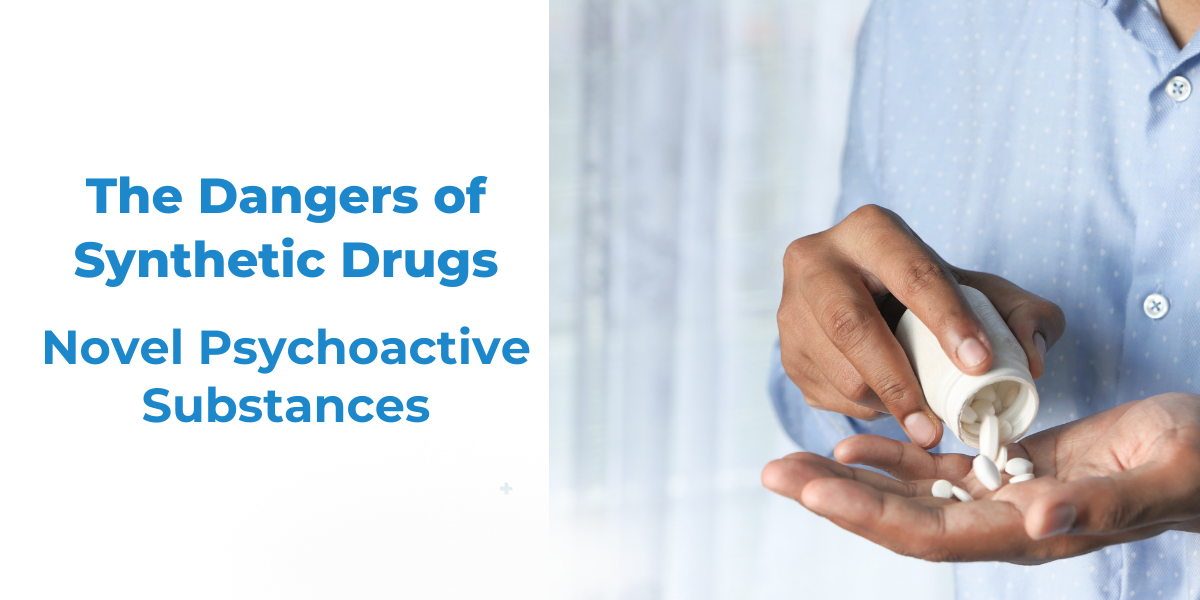In recent years, Novel Psychoactive Substances (NPS) — often called synthetic or designer drugs — have become a growing concern in both public health and law enforcement. These substances are engineered to mimic the effects of traditional drugs like cannabis, ecstasy, or opioids, but with unpredictable and often dangerous results. As these substances evolve, so must our NPS drug screening methods and public awareness.
What Are Novel Psychoactive Substances?
Novel Psychoactive Substances (NPS) are synthetic compounds developed to replicate the effects of controlled drugs. Marketed under deceptive names like “legal highs” or “research chemicals,” these substances often appear harmless but can be highly toxic. Constant modifications to their chemical structure help them evade legal classification, making regulation and enforcement difficult.
Types of NPS include::
- Synthetic Cannabinoids (e.g., Spice, K2): These are designed to act on the same brain receptors as THC, the active ingredient in cannabis, but they often produce severe effects such as paranoia, hallucinations, and even psychotic episodes.
- Synthetic Cathinones (e.g., Bath Salts): Often compared to amphetamines, these are stimulants that can lead to aggressive behavior, increased heart rate, and extreme anxiety.
- Synthetic Opioids (e.g., Fentanyl analogs): These drugs are significantly more potent than heroin or prescription opioids, increasing the risk of fatal overdose.
The Dangers of Synthetic Drugs
The biggest risk associated with synthetic drug detection is the unpredictability of their effects. Many are produced in unregulated labs, with no consistency in dosage or chemical content. Users can suffer seizures, psychotic episodes, or cardiac arrest. Medical professionals may struggle to provide treatment due to the unknown compounds involved, reinforcing the need for better NPS toxicology testing.
How to Identify Novel Psychoactive Substances
New psychoactive substance identification is a complex process. These substances come in powders, liquids, capsules, or are sprayed onto herbal material. Often packaged in flashy wrappers and mislabeled as everyday products, NPS are designed to avoid scrutiny.
Common physical signs of use include:
- Dilated pupils
- Rapid heartbeat
- Extreme agitation or paranoia
- Hallucinations or erratic behavior
Early recognition is critical to prevent harm and enable swift intervention, particularly in emergency rooms and forensic toxicology investigations.
Drug Screening for NPS
Challenges in Detecting NPS
Standard drug tests often fail to detect NPS due to their constantly evolving chemical structure. Traditional panels are not equipped to pick up these new compounds, especially in workplace or legal cases. This gap in detection poses serious safety and compliance risks.
Advances in Drug Screening for NPS
At The Carlson Company, we are pioneering the development of more sophisticated NPS drug screening technologies. These include rapid NPS drug test kits and advanced laboratory methods to detect a wider range of substances.
Our forensic NPS analysis and customized screening protocols are built to adapt to the fast-paced emergence of new synthetic drugs. Whether in a legal case, emergency room, or occupational setting, accurate detection is critical.
What is the Most Common Psychoactive Substance?
Some psychoactive substances, such as caffeine, nicotine, and alcohol, are legal and widely consumed. Among these, caffeine is the most commonly used worldwide, often found in coffee, tea, and energy drinks. Though legal, these substances can still pose health risks, especially with excessive consumption.
Biological Testing for NPS
Modern labs can now conduct NPS detection in urine and blood analysis for NPS using advanced techniques such as LC-MS/MS and GC-MS. These methods ensure accurate identification of substances even in postmortem or delayed testing scenarios.
For long-term exposure assessments, hair sample testing can also provide critical toxicological data on chronic drug use and environmental contamination.
The Grey Area of Legality
One of the most concerning aspects of NPS is the legal grey zone they occupy. As soon as one compound is banned, another — just slightly altered — emerges. This loophole makes regulation challenging and highlights the importance of ongoing toxicological consulting and continuous testing development.
The Future of Novel Psychoactive Substances
The global NPS market shows no signs of slowing. Increased investment in new psychoactive substances identification and enhanced synthetic drug detection protocols is vital. Collaboration among healthcare professionals, law enforcement, and forensic labs is the key to combating this evolving threat.
As synthetic drugs grow more complex, so must our ability to identify, screen, and respond to them.
Need Support with NPS Testing?
Whether you’re a medical professional, legal expert, or concerned family member, our team at The Carlson Company can help. For consultation or customised drug testing solutions, get in touch with us today.

